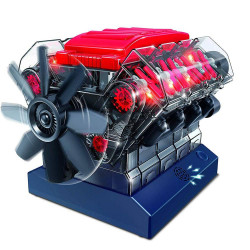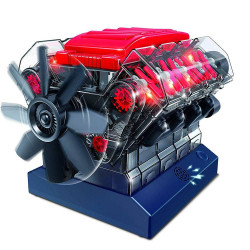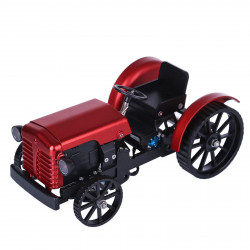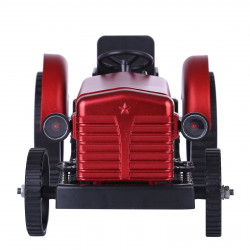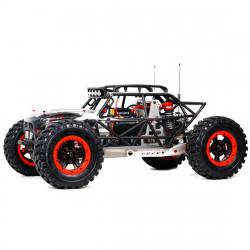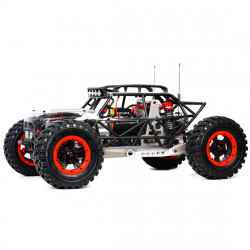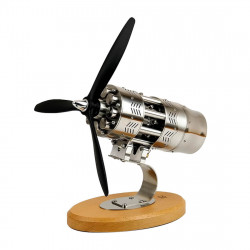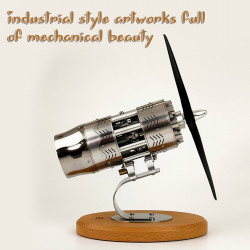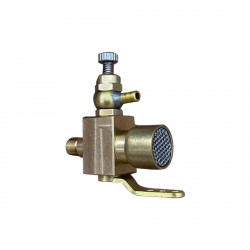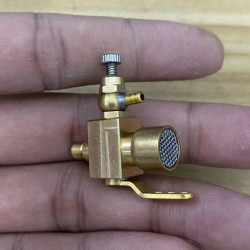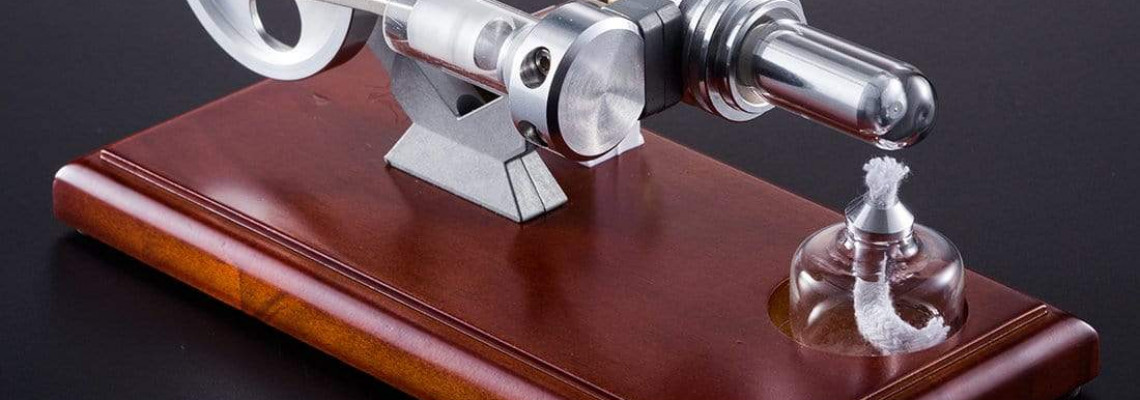
Stirling Engines are Cool and Efficient
So, Why Aren't They More Popular?
Stirling engines run cleanly, efficiently, and with little harm to the environment. Why aren't they utilized in automobiles, boats, and airplanes if they're so fantastic?
You have likely heard about the high efficiency of Stirling engines.
Theoretically, Stirling engines can equal the Carnot cycle's maximum efficiency. Some Stirling engines are actually highly efficient.
Additionally, Stirling engines may operate cleanly and sustainably.
So why don't more people utilize Stirling engines?
Here's the Short Answer:
Stirling engines are not well suited for applications requiring rapid changes in power output levels, such as automobiles.
Stirling engines prefer to alter their power output levels gradually.
Additionally, compared to gasoline or diesel engines with comparable power output, they are typically heavier (and more costly).
Summary of the Full Article Below
The article below provides a more thorough explanation of why you most likely don't have a power-producing Stirling engine in your home today. It also details the engine's history and how it was forgotten, revived, and then forgotten again.
- The Original Engines
- Phillips Revival to Power Tube Type Radios
- The Wrong Research
- The Wrong Marketing
- Misguided Philanthropy
- The Curse of Carnot
- Dollars Per Watt
- Difficult Design
- What You CAN Buy Today
The Original Stirling Engine
When it came to power density, Robert Stirling's first engine, which he created in 1816, was competitive with the steam engines of the day.
In contrast to the early steam engines, the Stirling engines had a problem. In the early nineteenth century, cast iron was the only material available for use in the construction of any engine.
Cast Iron Hates Being Hot
Keep in mind that both Stirling engines and steam engines are examples of external combustion engines, meaning that the fire does not occur inside the engine's cylinder.
However, the hot side of a Stirling engine must reach and maintain the average temperature at which the engine is intended to function.
When cast iron glows red hot or nearly red hot, it is not a durable material. Cast iron cannot withstand these temperatures for an extended period, but modern stainless steel can.
How Steam Engines Competed
Compared to the hot side of a Stirling engine, the engine portion of a steam engine operates at a substantially lower temperature. Cast iron works perfectly for steam engines, which have an almost infinite lifespan.
However, a steam engine requires a boiler to produce high-pressure steam; otherwise, it cannot generate any power. These boilers can and have failed, frequently killing those who were working close by.
Robert Stirling created his engine for this reason.
Steam Engine Boilers are Only Partly Red Hot
In steam engines, boilers are only exposed to the flame's average temperature on the hot side.
The water pressure inside the boiler determines a steam boiler's internal temperature.
Compared to the flame side, that temperature is substantially lower.
By making it somewhat thicker, steam boiler builders may partially offset the drawbacks of cast iron.
A Problem of Materials
Therefore, in high-power applications, the early steam engines outperformed the early Stirling engines, primarily due to the short lifespan of cast iron at high temperatures.
The following century might have been the era of Stirling engines rather than steam engines if the readily available stainless steels of today had been available in 1816.
Where the Early Stirling Engines Won
Not everyone in need of power is attempting to operate a large machine, such as a train.
Some people must take actions such as
- Pumpwater
- Power small factories
- Run fans
- Grind small amounts of grains
These people required a long-lasting device that was simple to start, operate, and maintain.
The early Stirling engines competed very well in these niches, eventually becoming known as "hot air engines."
Hot Air Engines
These engines had a long lifespan, operated at low power densities, and were safe to use.
What was their duration? Many of them can still be found on the antique market today because they lasted so long.
Antique Stirling vs. Antique Gasoline or Diesel
John D. Rockefeller established the Standard Oil Company in 1870, and the petroleum era was well underway by the time he retired in 1902.
The power output of a gasoline engine that was available for purchase in 1870 overtook that of a Stirling engine that was also that year, and the power output of gasoline engines increased more quickly each year than that of Stirling engines.
The Rush to Electrify
Electricity was used to light and power the World's Colombian Exposition in Chicago in 1893. This was a turning point in the push to electrify the world, even though it was by no means the first usage of electricity.
Small vintage Stirling engines were not at all competitive with small electric motors. Still, they were competitive with miniature steam engines in terms of initial purchase price and ease of use.
Stirling engines were retired as soon as an area was electrified, turning them into the cherished antiques that they are today.
Phillips Revival to Power Radios
The Dutch electronics behemoth Phillips needed a silent, dependable emergency power source for their tube-type radios shortly after World War II.
If you are unfamiliar with tube-based electronics, you should be aware that they consume a lot of power and glow hot.
When an engineer at Philips Electronics saw some outdated hot air engines, he saw that he could modify them to create a dependable and silent power source for their radios. Before long, Philips had brought Stirling engines up to date.
Bad Market Timing Beats Good Engineering
Around the time that transistors replaced the previous method of building electronics, Philips eventually developed and refined their power-producing Stirling engines.
People could and affordably run transistor radios on batteries when they needed to use them in an emergency since they consumed so much less electricity.
Philips Wasn't an Engine Company
If the engines weren't being used to power its devices, Philips had no interest in selling them.
Other than for electronics, they had no interest in producing engines.
When Philips realized that the world of electronics manufacturing was moving entirely to transistors, they promptly discontinued their Stirling engine operation.
Philips was fortunate to create a highly successful line of Stirling cryocoolers along the way, and the company still produces them today.
The Wrong Research
Scholars were drawn to Phillips' work, which was widely published in engineering journals. They were able to demonstrate the theoretically high efficiency of Stirling engines.
This evidence of excellent efficiency garnered a lot of interest and funding for investigation.
Effective engines are necessary for everyone, right? Other factors, like as the initial cost and the use of engines that can quickly and readily adjust power levels, are also significant.
Research to Put Stirling Engines in Cars
The US government supported a research and development initiative to install Stirling engines in automobiles—an application for which they were never well suited.
The resurgence of interest in Stirling engines aided the following research initiatives:
For the military, General Motors created a silent Stirling engine power generator prototype.
NASA constructed several Stirling engines, including one for a pickup truck, to power deep space probes.
To power airplanes, private individuals tried to create Stirling engines.
Regretfully, none of these studies produced a commercially viable product.
The Wrong Marketing
Engineers are passionate about their work. However, after the engineering is finished, they don't enjoy marketing their inventions much.
Therefore, they look for a simple solution: hiring someone—or worse, another business—to handle their marketing.
Rather than making a sensible decision, such as establishing a new business and starting production to cater to lucrative niche markets, they frequently attempt to collaborate with a large utility to promote their engines.
The large utility doesn't really care about the technology, but it appreciates the initiative because it makes it sound green and environmentally good.
Consider the WhisperGen Story
New Zealand-based WhisperGen created a superb Stirling engine with combined heating power for homes, yachts, and other applications.
If they had stuck to lucrative niche markets, their engines, which were initially marketed to yachts, may have been a fantastic idea.
The Wrong Partners
Instead, they looked for large utility marketing partners who would help them promote their green and clean technologies throughout Europe.
Ultimately, the utility companies showed little interest in the technology, and they readily allowed their bean counters to persuade them to abandon the project.
Sadly, by the time the plan to install a Stirling engine in every European home was abandoned, the workforce had grown so large that it was impossible to reduce it to cater to niche markets profitably.
As I write this, Dean Kamen's organization, DEKA Research, is currently reliving the Whispergen failure story.
Misguided Philanthropy
A number of misguided philanthropists and Stirling technology enthusiasts have promoted the use of Stirling engines in the third world.
They overlooked the fact that the third world is utterly uninterested in what would be best for them, mainly if it costs a dollar more than the least expensive item they can now purchase that will likewise function.
How to Get the Third World Interested
When new products are aired on American television, the third world becomes interested in them. However, they aren't interested because they don't currently see Stirling engines on American television.
A Great Product for Somebody Else
It's simply a kind way of stating, "I don't want that," when you see a product and believe it might benefit someone else.
How to Find the Right Markets
If you want to promote Stirling engines, create a product that you want to use in your daily life, exactly where you live.
Don't attempt to construct one for someone whose wants you can't possibly comprehend and who lives halfway around the world.
How to Develop Third-World Markets
Stirling engines must be widely employed in the first world before being included in American television series if technology enthusiasts hope to see them used in the third world.
The products must be competitively priced or, better still, less expensive than their current internal combustion alternatives in order to attract interest from the third world.
The Curse of Carnot
In my physics textbook, I came across the following line during my first physics class in Joliet, Illinois:
The Carnot cycle has the highest theoretical efficiency, while Stirling engines have the same theoretical efficiency.
"If these are so great, why aren't they being used?" I asked myself.
Most likely, you came to this page because of the same query.
Other Measures of Goodness
However, efficiency is only one indicator of a product's quality. Other methods, such as ease of use and cheap buying price, can also assess a design's quality.
Any engine that is designed with an unwavering emphasis on efficiency will produce an unbalanced product that nobody will desire or be able to purchase.
Technically, It's True!
It is possible to construct Stirling engines that are incredibly efficient.
Additionally, engineers will create a Stirling engine with the highest efficiency if you instruct them to do so.
After finishing, they will return and place the prototype on your desk, then use their testing results to demonstrate its effectiveness before saying, "Give me my bonus." It is compelling.
How Engineering Tradeoffs Work
In engineering, every design compromise exists. Some parts of your design will suffer as you make improvements to others. I don't care if you don't like that.
I work as an engineer. That's how nature operates, and I attended the University of Illinois. It doesn't care what you believe.
Understanding how nature functions and creating products that improve the world around you are the responsibilities of an engineer.
Efficiency in engineering has a cost. You should make your first efficiency improvements, as they will be inexpensive and have a significant impact.
You shouldn't implement all of your second efficiency enhancements because they will be more costly.
The Price of the Last 3%
However, if you make a final 3% efficiency gain in your design, it could triple the cost of producing your engine. If this happens, no one will buy it. Thus, you should definitely avoid doing it.
The Best Figure of Merit – Dollars Per Watt
Consumers want to know if a product will fulfill their needs in the manner they desire and at a cost they can afford.
In my opinion, the cost per watt that the consumer will have to pay to have it brought to and installed at his home should always be considered while designing Stirling engines.
Before the initial design guideline is produced, all costs, including the cost of the box, must be considered.
Stirling Engines are Hard to Design
To put it plainly, Stirling engines are a pain in the ass.
Suck, squeeze, bang, and blast are the basic guidelines for constructing a gasoline or diesel engine. The four-stroke cycle is the name given to it.
It is easy for any student in engineering school or auto shop class to understand how to develop a powerful gasoline or diesel engine.
Stirling Engines Have Different Design Rules
Regretfully, Stirling engines are exempt from the same design guidelines.
To increase power in a gasoline engine, you enlarge the cylinders, add more fuel and air, and repeat the cycle more quickly.
Stirling engine design principles are not clear-cut or straightforward.
You will either get an engine that runs worse or one that doesn't run at all if you attempt to enhance a Stirling engine by doing the same things you would do to a gasoline engine.
Think About Ratios
Everything in a Stirling engine is interconnected, and the designs are all about ratios. Everything changes when you change one thing.
For instance, in order to benefit from any improvements made to the Stirling engine, the compression ratio must be altered.
NASA Stirling Engine Design Guide
Although there isn't a straightforward explanation that can be taught in an auto shop class, I'm sure that the book has some helpful information about Stirling engine design.
It is a standard, unintelligible government paper.
Stirling Engines Are Unforgiving of Design Mistakes
A gasoline engine will still operate even if its performance isn't as good as you would have expected if you make one or two design mistakes.
If you make a single mistake with the Stirling engines, your engine may not start at all.
Good Design is Possible
It is possible to acquire good Stirling engine design skills.
I advise prospective Stirling engine builders to construct a large number of Stirling engine models to obtain a sense of all the variables.
As various features are tested and engine issues are fixed, new Stirling engine designs should be constructed with easily adjustable compression ratios.
What You CAN Buy Today
Fans
The most accessible and valuable use for Stirling engine power nowadays are most likely fans for wood burners.
Although they are not yet a commonplace item at Home Depot, they are an excellent choice if you want a fan to circulate the air around your wood burner in a cabin without electricity.
Combined Heating Power Engines
These engines are ideal for businesses that use a lot of power and hot water, and they have arrived on the market at a reasonable price.
They work well for things like commercial laundry and building heating.
Really Cool Models
A variety of Stirling engine models are produced for amusement and education by numerous businesses, including mine.
It is not appropriate to devalue this market.
These will be useful teaching resources for students studying engineering and physics, as well as those interested in technology.
It is possible to run the low-temperature difference models indoors without releasing carbon monoxide into the space.
These models assist all students in comprehending the essential physics of engines of all kinds, not only Stirling engines.
Very Deadly Submarines
In order to play the antagonist in war exercises, the US Navy leased a Swedish Gotland-class submarine with Stirling engines in 2005.
The outcome was that the extremely quiet Swedish submarine managed to get past the carrier's anti-submarine defences and, in a simulation, sank the carrier with five torpedoes before making a stealthy escape².
Even while it appears that these extremely quiet submarines are the best investment for the present US naval strategy, the US Navy is not yet interested.
Sun Pulse Engines
A German business called Sun Orbit is producing a few low-production, low-temperature difference power-generating Stirling engines.
Although they do not yet have prices on their website, they are most likely accessible online today.
More Uses of Stirling Engines
You will appreciate our page on Stirling engine uses today if you have liked this page thus far.
Please Check Out Our Stirling Store
Even if you don't purchase anything, we would greatly appreciate it if you could take a moment to visit our Stirling engine store. Please check it out here.
